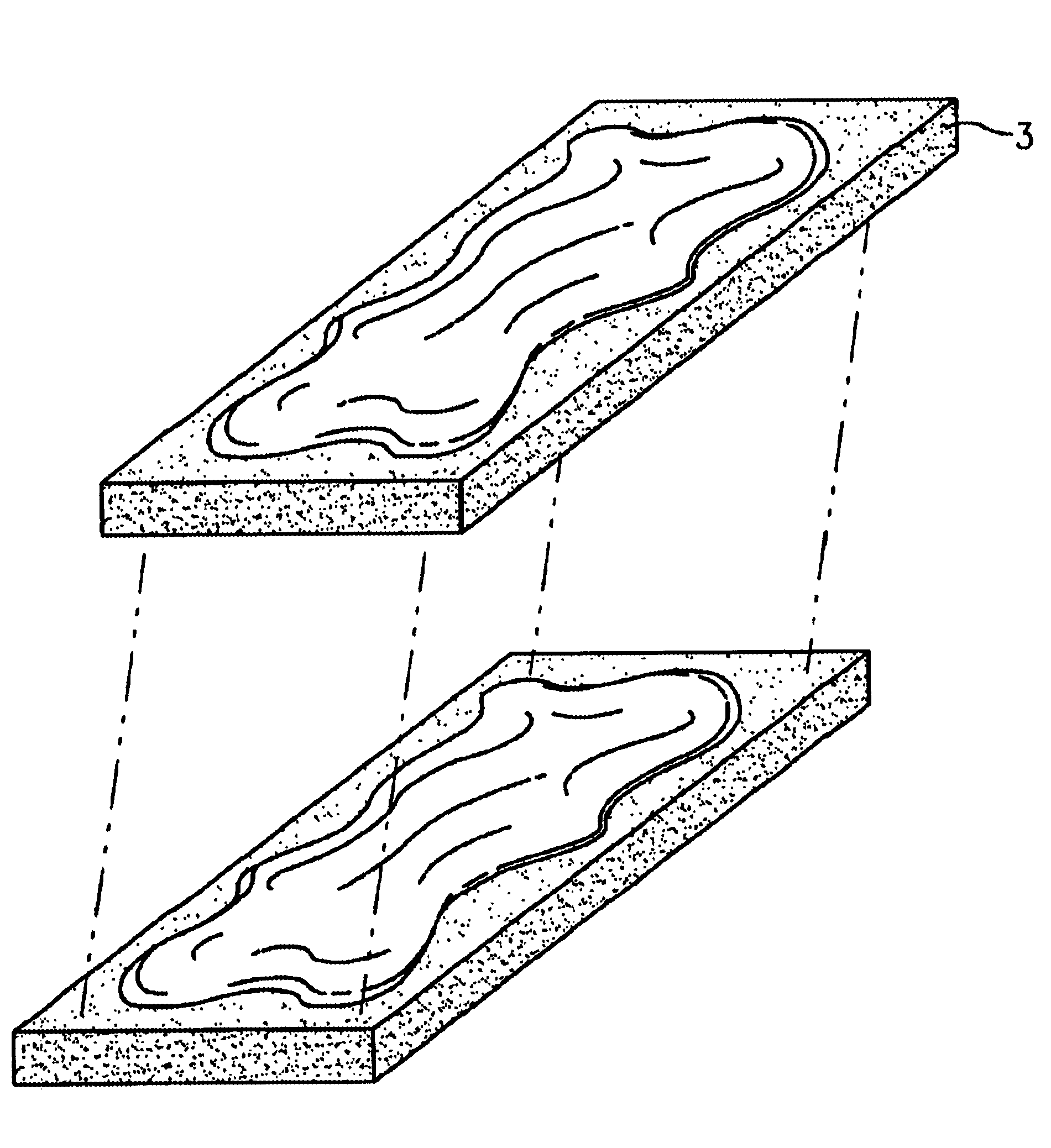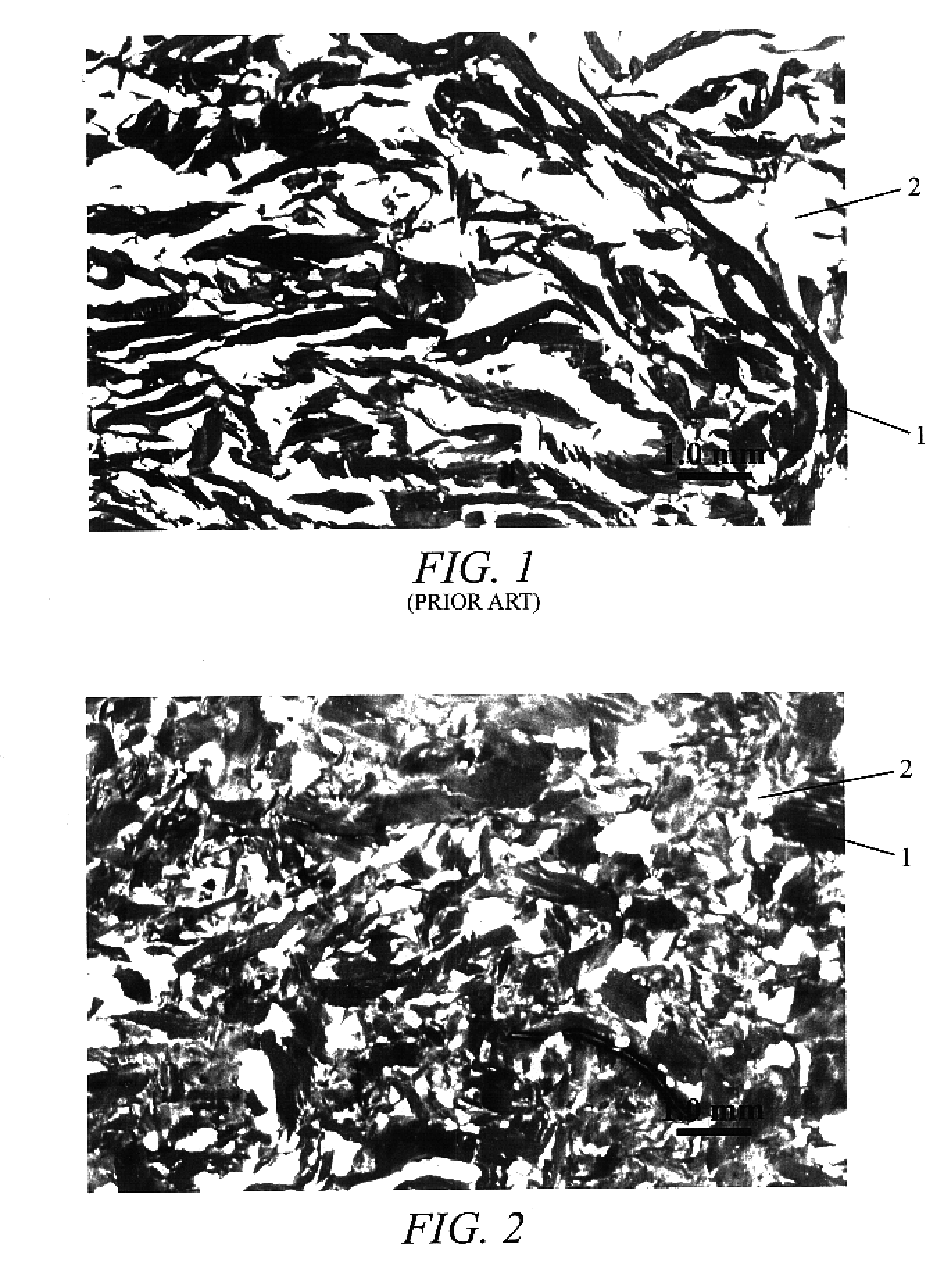Osteogenic implants derived from bone
a bone-derived, osteogenic technology, applied in the direction of prosthesis, osteosynthesis devices, shoulder joints, etc., can solve the problems of affecting the osteoinductivity of the product, prior art demineralized bone products have been unsatisfactory for applications requiring a thin osteogenic material capable, and prior art products have been limited as to the size and shape of the finished produ
- Summary
- Abstract
- Description
- Claims
- Application Information
AI Technical Summary
Benefits of technology
Problems solved by technology
Method used
Image
Examples
example 1
Allogenic cortical bone was processed in the bone milling apparatus described in U.S. Pat. No. 5,607,269 to yield a mass of bone-derived elements. The bone-derived elements were then placed in a reactor. A 0.6 N solution of HCl at 15 ml per gram of bone-derived elements was introduced into the reactor, the reaction proceeding for 1 to 2 hours. Following drainage of the HCl, the bone-derived elements were covered with 0.6 N HCl / 20 ppm-2000 ppm nonionic surfactant solution for 24 to 48 hours. Following drainage of the HCl / surfactant solution, 0.6 N HCl at 15 ml per gram of total bone was introduced into the reactor, the reaction proceeding for 40 to 50 minutes. Following drainage through a sieve, the bone was rinsed three times with water for injection at 15 ml per gram bone weight with the water for injection being replaced at 15-minute intervals. Following drainage of the water for injection, the bone was covered with alcohol and allowed to soak for at least 30 minutes. The alcohol ...
example 2
A mass of processed demineralized bovine bone bone-derived elements prepared as described in Example 1 was combined with a sufficient quantity of bio-compatible carrier (50% by weight Glycerol / Water) to yield a coherent mass having a dough-like consistency. The coherent mass was placed on a Tyvek™ sheet that covered an impermeable, horizontally planar work surface. After placing a second sheet of Tyvek™ on top of the coherent mass, the mass was compressively contacted by hand with a revolving 2058 gram, 6.13 cm. diameter, 25.5 cm. long impermeable cylinder with sufficient applied force to yield an osteoimplant having minimal thickness.
PUM
| Property | Measurement | Unit |
|---|---|---|
| density | aaaaa | aaaaa |
| median width | aaaaa | aaaaa |
| median width | aaaaa | aaaaa |
Abstract
Description
Claims
Application Information
 Login to View More
Login to View More - R&D
- Intellectual Property
- Life Sciences
- Materials
- Tech Scout
- Unparalleled Data Quality
- Higher Quality Content
- 60% Fewer Hallucinations
Browse by: Latest US Patents, China's latest patents, Technical Efficacy Thesaurus, Application Domain, Technology Topic, Popular Technical Reports.
© 2025 PatSnap. All rights reserved.Legal|Privacy policy|Modern Slavery Act Transparency Statement|Sitemap|About US| Contact US: help@patsnap.com



